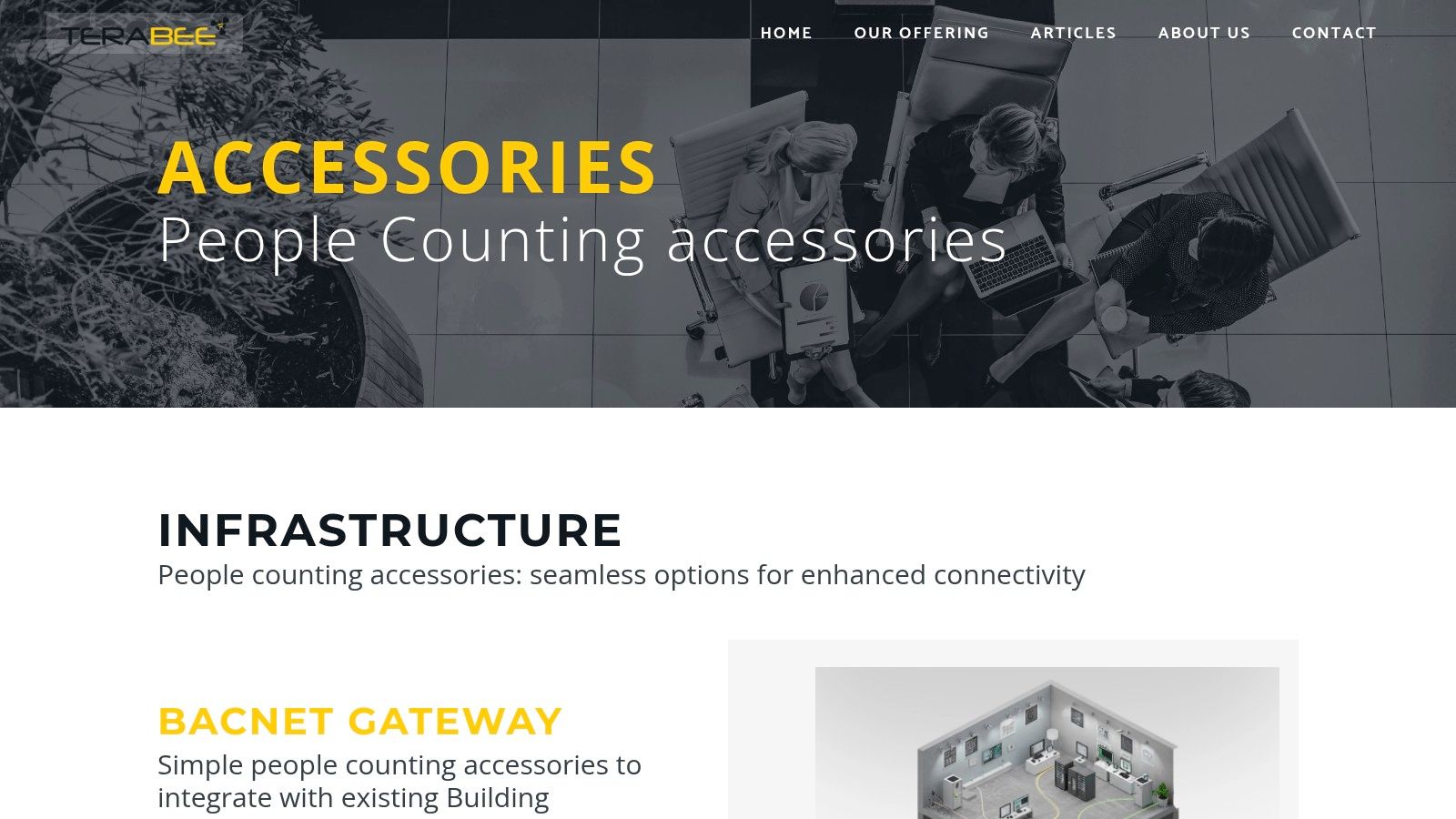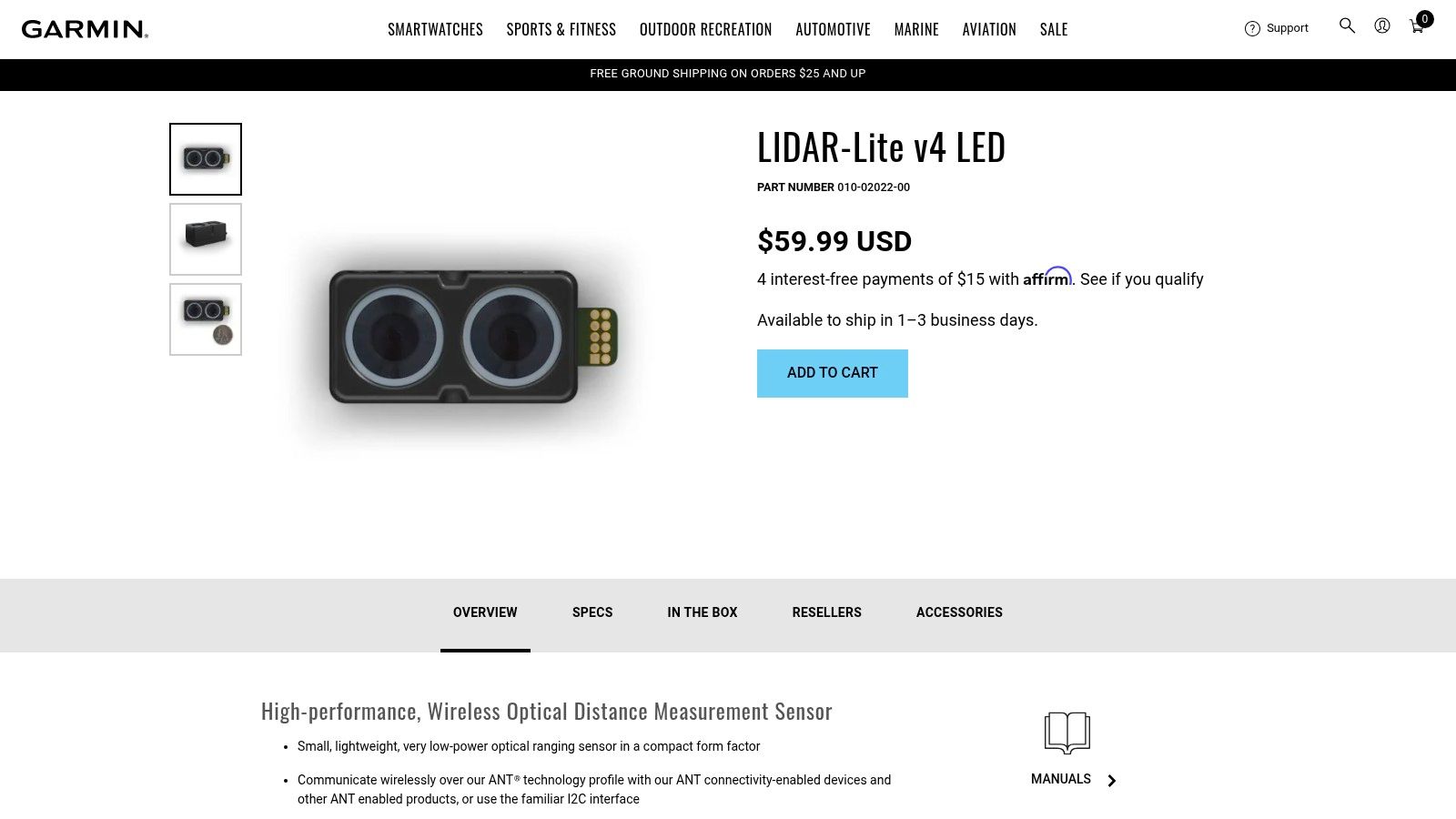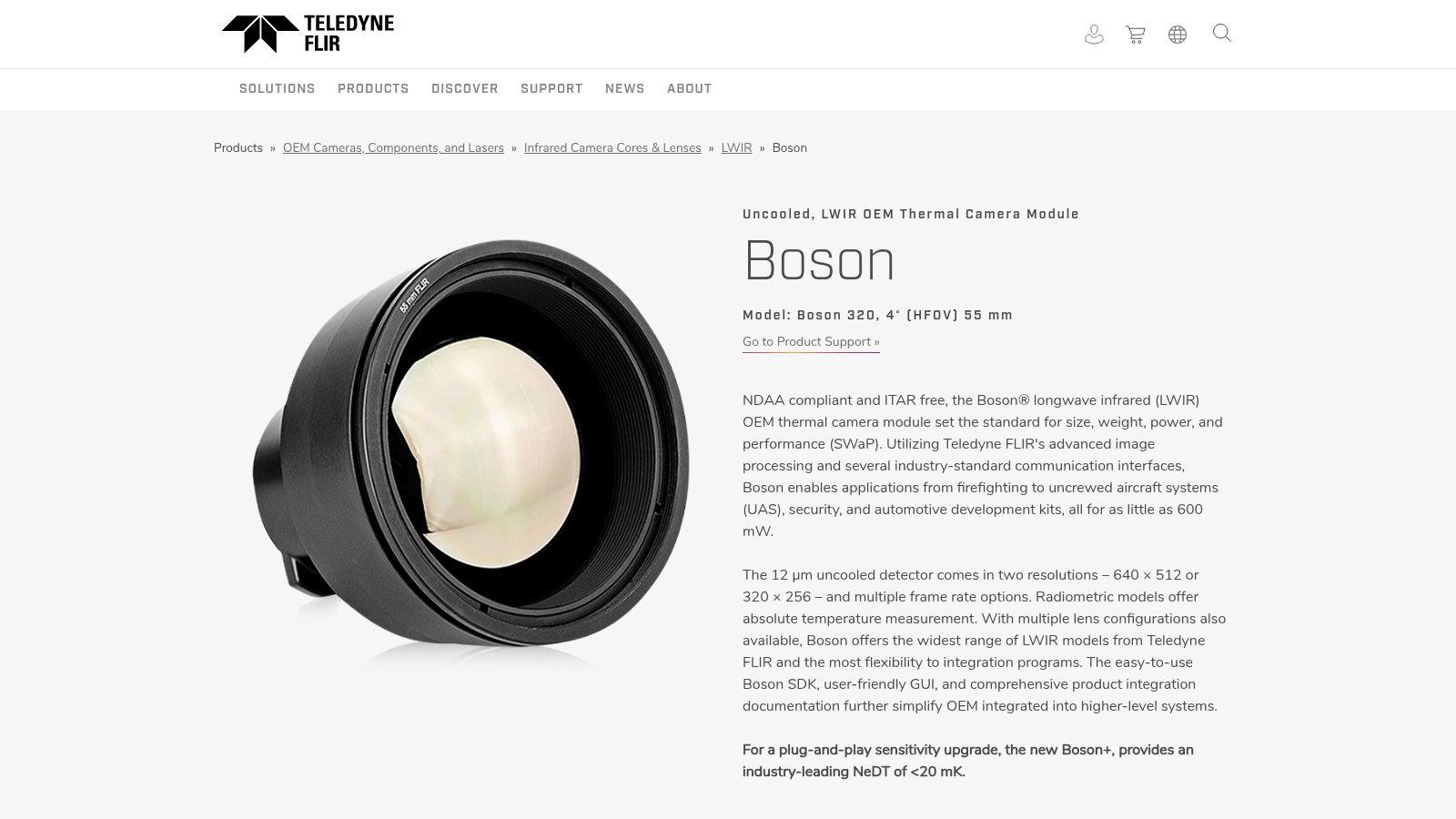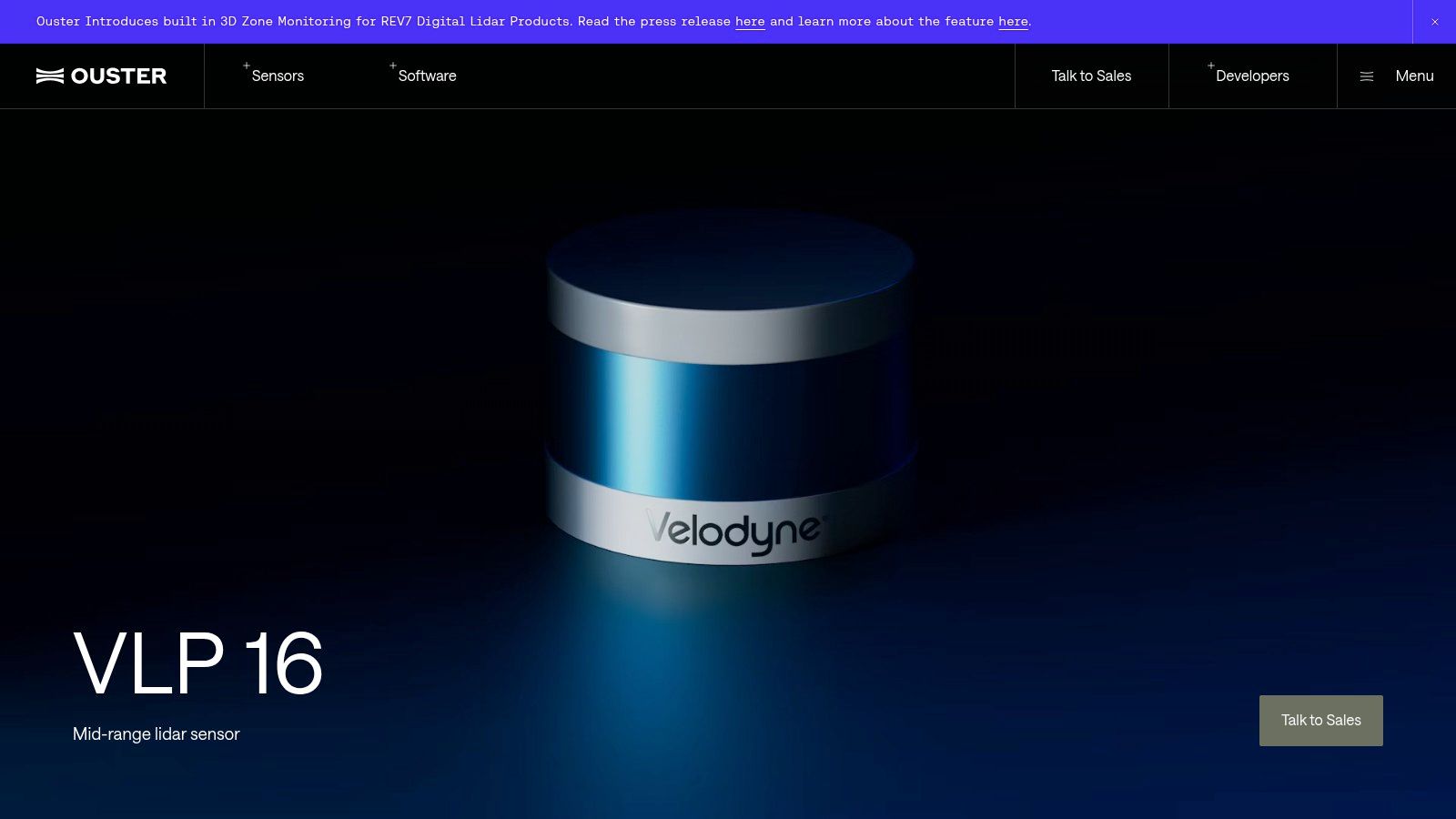Top Sensors for Drones in 2025 | Enhance Your Drone Performance
- Nickolas Williams

- May 10
- 14 min read
Taking Flight with the Right Sensors
Want to boost your drone's capabilities? Sensors are key. This listicle covers seven essential sensors for drones in 2025, from LiDAR to cameras. Whether you're a hobbyist or professional, learning about sensors for drones is crucial for obstacle avoidance, navigation, and capturing stunning footage. We'll break down the pros and cons of each sensor, including the Terabee TeraRanger Evo 60m, LidarLite v4 LED, Sony IMX586, FLIR Boson, Benewake TFmini Plus, Velodyne Puck LITE, and Bosch BMI088 IMU, helping you choose the best fit for your needs.
1. Terabee TeraRanger Evo 60m
The Terabee TeraRanger Evo 60m stands out as a premium choice among sensors for drones, offering a compelling blend of lightweight design and high-performance distance sensing. Utilizing Time-of-Flight (ToF) technology, this sensor provides accurate distance measurements up to 60 meters, making it a versatile tool for a variety of drone applications. Whether you're a hobbyist navigating complex environments or a professional requiring precise altitude control, the Evo 60m's capabilities enhance safety and expand operational possibilities. Its fast refresh rate allows for real-time obstacle avoidance, crucial for navigating challenging terrain or autonomous flight. Furthermore, its compact size and minimal weight make it ideal for payload-sensitive drones where every gram counts.

This sensor's capabilities are particularly valuable for tasks like precision landing, terrain following, and creating 3D maps. Imagine capturing stunning aerial footage while effortlessly maintaining a consistent altitude above uneven terrain. Or picture a drone autonomously navigating a dense forest, relying on the Evo 60m for obstacle avoidance. These are just a few examples of how this sensor empowers drone operators with enhanced control and safety.
The Evo 60m boasts a high update rate of up to 240Hz, providing real-time distance data crucial for dynamic flight control and obstacle avoidance. Its low power consumption (typically 1W) helps maximize flight time, a significant advantage for extended missions. Furthermore, its plug-and-play compatibility with most flight controllers simplifies integration and setup, making it accessible to users of varying technical expertise. I2C and UART communication interfaces provide flexibility in connecting to different drone platforms. While pricing varies, expect to invest a bit more for the Evo 60m compared to lower-range alternatives, reflecting its advanced capabilities. You can learn more about Terabee TeraRanger Evo 60m and its specifications to determine if it meets your specific needs.
While the TeraRanger Evo 60m offers significant advantages, it's essential to be aware of its limitations. Its performance can be affected by bright sunlight, and its single-point measurement means it has a limited field of view. While its lightweight design is a major plus, it comes with a higher price tag compared to ultrasonic alternatives. However, for applications demanding high accuracy, a fast refresh rate, and a lightweight profile, the Evo 60m earns its place as a top-tier sensor for drones. For professionals and serious hobbyists pushing the boundaries of drone capabilities, this sensor delivers the performance needed for demanding tasks. You can find more information and purchase the TeraRanger Evo 60m on the Terabee website.
2. LidarLite v4 LED
The Garmin LidarLite v4 LED distinguishes itself among sensors for drones with its compact design and eye-safe LED-based technology. Unlike laser-based lidar sensors, the v4 LED utilizes infrared light, making it a safer option for hobbyists and professionals alike. This sensor excels at providing accurate altitude readings, a crucial element for stable flight and precise maneuvering. Furthermore, its capabilities extend to obstacle detection and terrain mapping, opening doors for advanced autonomous flight and 3D modeling applications. This makes it a valuable tool for various drone applications, from aerial photography and videography to industrial inspections and agricultural surveys.

The LidarLite v4 LED boasts a range of up to 10 meters for most surfaces, delivering an accuracy of ±2.5cm under optimal conditions. Its 120Hz maximum update rate ensures rapid data acquisition, allowing your drone to react quickly to changes in altitude or approaching obstacles. The sensor communicates through I2C and PWM interfaces, making it compatible with most flight controllers commonly used in DIY and commercial drone builds. Furthermore, its low power consumption (105mA typical) helps maximize flight time, a critical factor for extended missions. While pricing can vary, the LidarLite v4 LED generally falls within a reasonable price range for its capabilities (check the Garmin website for the most up-to-date pricing).
One of the significant advantages of the LidarLite v4 LED is its robust performance in various lighting conditions. Unlike some sensors that struggle in bright sunlight or low-light environments, this sensor maintains reliable operation, ensuring consistent data acquisition. This reliability is particularly important for professional applications where consistent performance is essential.
Compared to laser-based lidar alternatives, the LidarLite v4 LED's shorter range might be a limitation for some applications. Furthermore, its performance can degrade in highly reflective environments like those with large glass surfaces or mirrors. It also offers limited penetration through fog or dust. However, the eye-safe nature of the LED technology and its robust performance in various lighting conditions make it a compelling option for many drone operators.
For implementing the LidarLite v4 LED, connecting it to your flight controller is usually straightforward. Consult the sensor’s documentation and your flight controller's manual for specific wiring instructions. Most flight controller software allows for easy configuration and calibration of the sensor. Calibration is often as simple as mounting the sensor on a flat surface and initiating the calibration procedure within the flight controller software.
In summary, the Garmin LidarLite v4 LED offers a balance of performance, safety, and ease of integration, making it a valuable addition to your drone's sensor suite. Whether you're a drone hobbyist, a professional photographer, or a commercial drone operator, the LidarLite v4 LED is a worthy contender among sensors for drones, particularly for those prioritizing eye-safety and reliable performance in varied lighting conditions. For more details and purchasing information, visit https://www.garmin.com/en-US/p/610275.
3. Sony IMX586 Camera Sensor
The Sony IMX586 is a leading camera sensor for drones, offering a compelling blend of high resolution, impressive low-light performance, and compact size. This makes it a popular choice among drone manufacturers and DIY builders seeking top-tier aerial imaging capabilities. If you're looking for sensors for drones that deliver exceptional image quality, the IMX586 deserves serious consideration.
This 48MP sensor (8000 x 6000 pixels) boasts a 1/2-inch sensor size with a 0.8μm pixel size, enabling it to capture highly detailed images and 4K video at up to 90fps. Its Quad Bayer color filter array cleverly combines four pixels into one larger pixel in low-light conditions, effectively increasing light sensitivity and reducing noise. This results in excellent low-light performance, making the IMX586 ideal for capturing stunning visuals even in challenging lighting situations. Furthermore, its dynamic range of up to 12.6 stops ensures detailed images with well-preserved highlights and shadows, crucial for capturing the nuances of landscapes and other aerial scenes.
Practical Applications and Use Cases:
Professional Aerial Photography & Videography: The high resolution and dynamic range make it suitable for capturing professional-grade stills and videos for various applications, including real estate, surveying, and filmmaking.
Drone Inspections: The detail provided by the 48MP sensor allows for close-up inspections of infrastructure, power lines, and other assets, aiding in preventative maintenance and identifying potential issues.
Search and Rescue: The improved low-light performance enables drones equipped with the IMX586 to operate effectively in low-light or night-time search and rescue operations.
High-Quality Mapping and 3D Modeling: The high resolution contributes to accurate mapping and 3D modeling, beneficial for urban planning, environmental monitoring, and agricultural applications.
DIY Drone Builds: Its relatively small size and availability make it a feasible option for hobbyists and DIY drone builders seeking high-performance imaging solutions.
Pros:
Exceptional image quality for aerial photography
Excellent low-light performance
High dynamic range (up to 12.6 stops) for challenging lighting conditions
Relatively small size for the resolution offered
Cons:
Higher power consumption than lower-resolution alternatives, impacting flight time.
Requires substantial processing power for full resolution image and video processing, potentially necessitating a powerful onboard computer for some applications.
Can generate heat during continuous operation, requiring appropriate thermal management in drone design.
Implementation/Setup Tips:
Ensure your drone's processing unit can handle the demands of the 48MP sensor.
Consider the power consumption and its impact on flight time. Optimize battery selection and flight planning accordingly.
Implement appropriate cooling solutions to manage heat generation during prolonged use.
Utilize post-processing software to fully realize the potential of the high-resolution images and videos captured.
Pricing and Technical Requirements: Pricing information can vary depending on the supplier and quantity. Contact Sony Semiconductor Solutions or authorized distributors for detailed pricing. Technical requirements include a compatible drone platform with sufficient processing power, adequate power supply, and potentially thermal management solutions. Detailed specifications can be found in the official datasheet (https://www.sony-semicon.co.jp/products/common/pdf/IMX586_Flyer.pdf).
While other high-resolution sensors exist for drones, the Sony IMX586 stands out due to its balanced combination of resolution, low-light capability, and size. It provides a powerful imaging solution for a broad range of drone applications, making it an excellent choice for both professionals and enthusiasts.
4. FLIR Boson Thermal Camera
The FLIR Boson is a top-tier choice among sensors for drones, offering high-performance thermal imaging capabilities in a remarkably compact package. It's a powerful tool for a variety of applications requiring heat detection, enabling drones to "see" what the naked eye cannot. This makes it particularly valuable for operations in challenging visibility conditions. Think search and rescue missions in dense forests, identifying failing components on power lines during inspections, or pinpointing hotspots in firefighting efforts. The Boson’s ability to operate effectively in darkness, through smoke, and even light fog elevates it from a simple camera to a critical sensor for professional drone operations.

The FLIR Boson is available in two resolution options: 320x256 and 640x512. While this might be lower resolution than standard visual cameras, the information provided by thermal imaging is fundamentally different and incredibly valuable. It uses an uncooled VOx microbolometer sensor to detect heat signatures, converting them into visible images. Multiple lens options, ranging from a narrow 4.9mm to a wider 92mm, allow users to customize the field of view for their specific needs. The exceptionally small size (21mm x 21mm x 11mm without the lens) and light weight (starting at just 7.5 grams for the core) make it ideal for integration with a wide range of drone platforms, minimizing payload impact. This compact design, combined with low power consumption (typically 500mW), extends flight times and allows for more efficient operations. You can Learn more about FLIR Boson Thermal Camera for more in-depth information.
One of the standout features of the Boson is its exceptional thermal sensitivity of <50 mK. This means it can detect incredibly subtle temperature differences, making it highly effective for identifying targets and anomalies. However, this advanced technology comes at a price. The FLIR Boson is a significant investment, with costs typically ranging from $2,000 to $10,000 depending on the chosen configuration and lens options. Furthermore, integrating the Boson into a drone requires specific technical expertise, and isn't a simple plug-and-play solution for most users. DIY drone builders and hobbyists should consider the integration complexity before committing to this sensor.
For professional drone operators in fields like precision agriculture, inspection services, search and rescue, and law enforcement, the FLIR Boson is a valuable investment. Its ability to provide crucial thermal data in challenging environments makes it a powerful sensor for drones, significantly expanding operational capabilities. However, its high cost and integration complexity make it less suitable for casual hobbyists. If you need the best in thermal imaging, and are prepared for the technical challenges and cost, the FLIR Boson is undoubtedly a leading choice. You can find more information and specifications on the FLIR website.
5. Benewake TFmini Plus LiDAR
The Benewake TFmini Plus LiDAR earns its spot on this list of top sensors for drones due to its incredible combination of small size, light weight, and affordable price. This makes it a particularly attractive option for hobbyists, DIY drone builders, and those working with smaller UAVs where payload capacity is a premium. While it may not offer the range or scanning capabilities of more expensive LiDAR units, its performance is more than adequate for a variety of common drone applications.
This micro single-point LiDAR distance sensor utilizes Time of Flight (ToF) technology to provide reliable distance measurements. This data can be crucial for several key drone functions, including:
Altitude Hold: Maintain a stable hover at a desired altitude. The TFmini Plus's high update rate of up to 1000Hz allows for quick adjustments, ensuring smooth and stable flight.
Obstacle Avoidance: Detect obstacles in the drone's path, particularly useful for autonomous flight or navigating complex environments. While a single-point sensor won't provide full 360-degree coverage, it can be highly effective for forward-facing obstacle detection.
Navigation Assistance: Supplement GPS data with precise distance measurements for improved navigation accuracy, particularly in GPS-denied environments or indoor settings.
Precision Landing: Accurately determine the distance to the landing surface for smoother and safer landings.
Features and Benefits:
Compact and Lightweight: Measuring a mere 35mm × 18.5mm × 21mm and weighing less than 10g, the TFmini Plus adds minimal bulk and weight to your drone.
Low Power Consumption: With a typical power consumption of 135mW, the sensor has minimal impact on battery life, extending flight time.
Affordable: Priced typically under $50, the TFmini Plus offers exceptional value for its capabilities, making LiDAR technology accessible to a wider range of users.
High Update Rate: The 1000Hz update rate provides real-time distance measurements, essential for fast-moving drones and responsive obstacle avoidance.
Flexible Communication: Supports both UART and I2C communication interfaces, making integration with various flight controllers relatively straightforward.
Detection Range: Offers a detection range of 0.1m to 12m, suitable for a variety of applications.
Pros:
Extremely compact and lightweight
Low power consumption
Affordable price point
High update rate suitable for fast-moving drones
Cons:
Limited range compared to higher-end LiDAR sensors (12m maximum)
Single-point measurement only (no scanning capability)
Performance can be affected by strong ambient light
Implementation Tips:
Carefully consider the mounting location on your drone to maximize the sensor's effectiveness for your intended application. For altitude hold, a downward-facing position is ideal. For obstacle avoidance, a forward-facing position is recommended.
Ensure proper calibration and configuration within your flight controller software.
Be aware of the sensor's limitations in bright sunlight or other challenging lighting conditions.
Technical Requirements: A compatible flight controller with either UART or I2C support is required.
Comparison: Compared to more advanced (and significantly more expensive) LiDAR systems that offer multi-point scanning and longer ranges, the TFmini Plus provides a cost-effective entry point into LiDAR technology for those primarily focused on basic altitude hold, short-range obstacle avoidance, and navigation assistance.
The Benewake TFmini Plus offers a compelling solution for drone enthusiasts and professionals seeking to integrate LiDAR technology into their projects without breaking the bank. Its compact size, light weight, and affordable price make it a valuable sensor for drones, particularly for smaller platforms and those on a budget.
6. Velodyne Puck LITE LiDAR
The Velodyne Puck LITE (VLP-16 LITE) is a popular choice among sensors for drones, especially for those needing high-resolution 3D mapping capabilities. This lightweight LiDAR sensor, derived from the industry-standard Velodyne Puck, is specifically designed for UAV applications requiring robust 3D perception. It offers a 360-degree horizontal field of view and a 30-degree vertical field of view, collecting data through 16 channels. This allows drones to generate highly detailed 3D point clouds of their surroundings, enabling advanced functionalities like precision navigation, obstacle avoidance, and comprehensive environmental scanning.

This sensor shines in applications where precise 3D data is crucial. For commercial drone operators, the Puck LITE allows for highly accurate aerial surveys, infrastructure inspections, and 3D modeling of landscapes. Professional photographers and videographers can leverage its capabilities for advanced cinematography, capturing stunning 3D environments. Even hobbyists and DIY drone builders benefit from enhanced autonomous navigation and obstacle avoidance. Imagine effortlessly navigating complex environments or autonomously mapping your neighborhood with incredible detail—the Puck LITE makes it possible.
The VLP-16 LITE offers a range of up to 100 meters with an accuracy of ±3cm. This high precision is essential for generating reliable 3D models and ensuring safe navigation. Weighing 590g (compared to the 830g of the standard Puck), it represents a significant weight reduction, a crucial consideration for drone payloads. Key features include its 16-channel 3D LiDAR scanning, broad field of view, and high-precision point cloud generation. Being an industry standard, it benefits from extensive software support and integration options. Learn more about Velodyne Puck LITE LiDAR for additional resources.
However, the Puck LITE does come with certain drawbacks. Its cost, ranging from approximately $4,000 to $8,000, is a significant investment. It also has a substantial power requirement of 8W, which can impact flight time. While lighter than the standard Puck, its 590g weight is still considerable compared to simpler, single-point sensors, requiring careful consideration of drone payload capacity.
Despite its cost and power requirements, the Velodyne Puck LITE earns its spot on this list due to its unparalleled 3D mapping capabilities, making it a top choice for professionals and serious hobbyists seeking the best in sensors for drones. When accuracy and detailed environmental understanding are paramount, the Puck LITE stands out. You'll need to ensure your drone can handle the weight and power demands, but the results—high-resolution 3D models and robust obstacle avoidance—are often worth the investment.
7. Bosch BMI088 IMU
The Bosch BMI088 is a top-tier choice among sensors for drones, providing highly accurate and reliable motion data crucial for stable and controlled flight. This high-performance 6-axis Inertial Measurement Unit (IMU) combines a 3-axis accelerometer and a 3-axis gyroscope, specifically designed to withstand the demanding conditions of drone operation. It excels in providing the essential orientation and movement information needed for precise flight control, navigation, and stabilization, making it a popular choice for both hobbyist and professional drone applications. Its ability to handle the vibrations and dynamic movements inherent in drone flight, while maintaining accuracy, sets it apart from consumer-grade alternatives.

The BMI088 boasts a low noise density of 175 μg/√Hz for the accelerometer, ensuring precise measurements even in challenging environments. This translates to smoother flight and more accurate control responses. Its vibration robustness up to 30,000 Hz is a significant advantage for drones, which experience considerable vibration from motors and propellers. This feature helps to filter out noise and ensure accurate data acquisition during flight. The compact form factor of 3mm × 4.5mm × 0.95mm allows for easy integration into various drone designs. Furthermore, the BMI088 offers digital SPI and I²C interfaces for seamless communication with flight controllers. Built-in temperature compensation further enhances the sensor's accuracy by mitigating the effects of temperature fluctuations on performance.
While the BMI088 offers exceptional performance, it's worth noting that it typically requires careful calibration for optimal results. This might involve using specialized software or procedures to fine-tune the sensor's readings. Also, compared to consumer-grade IMUs, the BMI088 is generally more expensive, reflecting its superior performance and robustness. Finally, while the BMI088 provides excellent motion data, it often requires an additional magnetometer for complete orientation information, particularly for heading or yaw calculations. Learn more about Bosch BMI088 IMU This combination allows for a more comprehensive understanding of the drone's orientation in 3D space.
For drone enthusiasts, photographers, and commercial operators seeking top-tier performance and reliability, the Bosch BMI088 is a compelling choice. Its robust design, accurate measurements, and low drift characteristics contribute significantly to enhanced flight stability and control. While the price point might be higher than consumer-grade options, the performance benefits make it a worthwhile investment for serious drone applications. For DIY drone builders, the small form factor and digital interfaces facilitate integration. While specific pricing can vary, expect the BMI088 to be positioned in the higher price bracket for sensors for drones, reflecting its advanced capabilities. Its low power consumption of just 5mA in full operation mode is an added benefit, maximizing battery life – a crucial factor for extending flight time. This makes it a suitable choice for a range of drones, from smaller, agile platforms to larger, more complex systems.
Key Specs Comparison of 7 Drone Sensors
Product | Core Features & Specs | User Experience & Quality ★ | Value & Price 💰 | Target Audience 👥 | Unique Selling Points ✨ |
|---|---|---|---|---|---|
Terabee TeraRanger Evo 60m | 60m range, ±4cm accuracy, 9g, 240Hz | ★★★★☆ Reliable & fast updates | 💰 Mid-high cost, plug & play | 👥 Payload-sensitive drones | ✨ Lightweight, weather resistant |
LidarLite v4 LED | 10m range, ±2.5cm accuracy, 120Hz | ★★★★☆ Reliable in varied light | 💰 Affordable, eye-safe LED | 👥 Consumer & professional drones | ✨ LED tech, small form factor |
Sony IMX586 Camera Sensor | 48MP, 4K@90fps, 12.6 stops dynamic | ★★★★★ Superior image quality | 💰 High power use, mid-price | 👥 Aerial photography/videography | ✨ Quad Bayer, excellent low-light |
FLIR Boson Thermal Camera | 320×256 / 640×512, 7.5g, low power | ★★★★☆ Exceptional thermal clarity | 💰 High cost ($2k-$10k) | 👥 Inspection, rescue, agriculture | ✨ Thermal sensitivity, see through smoke/fog |
Benewake TFmini Plus LiDAR | 0.1-12m range, ±5cm, 1000Hz update | ★★★☆☆ Compact, fast updates | 💰 Very affordable (~$50) | 👥 Small drones, budget builds | ✨ Ultra-compact, high update rate |
Velodyne Puck LITE LiDAR | 100m range, 16-channels, 360° FOV | ★★★★★ Industry standard, precise | 💰 Very high cost ($4k-$8k) | 👥 Advanced UAV mapping & navigation | ✨ Full 3D scanning, lightweight for category |
Bosch BMI088 IMU | 6-axis IMU, vibration robust, small | ★★★★☆ Stable, low drift | 💰 Mid-price, low power | 👥 Flight control systems | ✨ Vibration resistance, temp comp |
Elevating Drone Functionality with Advanced Sensors
From the compact Terabee TeraRanger Evo 60m for obstacle avoidance to the high-resolution Sony IMX586 camera sensor for stunning aerial photography, the sensors discussed in this article—including the LidarLite v4 LED, FLIR Boson Thermal Camera, Benewake TFmini Plus LiDAR, Velodyne Puck LITE LiDAR, and the Bosch BMI088 IMU—offer a wide range of capabilities for enhancing drone functionality. Choosing the right sensors for drones depends heavily on your specific needs. Factors like budget, desired accuracy, range, and weight limitations will all play a role in your decision-making process. Remember that effectively integrating these sensors often requires careful calibration and configuration to ensure optimal performance. Drones, equipped with advanced sensors, are revolutionizing various industries, including infrastructure inspections. For a deeper dive into this transformative application, check out this article: Drone Operations Transforming Infrastructure Inspections.
The optimal sensor configuration can transform a standard drone into a powerful tool capable of complex tasks, ranging from precision agriculture and 3D mapping to search and rescue operations. By carefully considering your project requirements and selecting the appropriate sensors for drones, you can unlock your drone's full potential and achieve remarkable results. Want to explore more options and compare different sensors to find the perfect fit for your drone project? Visit JAB Drone for a comprehensive selection of drone sensors, detailed specifications, and expert advice.




Comments